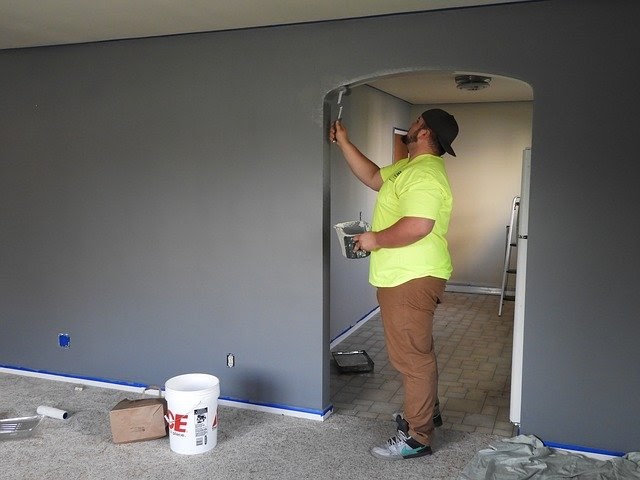According to the U.S. Bureau of Labor Statistics, the median pay for construction workers is $36,860. However, the highest earners can easily make up to $70,000. These pros are in demand because there are so many homeowners in need of help with repairs and renovations.
The journey toward becoming a remodeling contractor starts with obtaining the right educational foundation and training. Experience is also essential for skills to succeed in this industry and for licensing requirements in some states. The other steps to start your own remodeling business include getting licensed or certified, obtaining insurance, and acquiring leads and customers.
Obtain Necessary Education
The first step to becoming a remodeler is obtaining the necessary education. Remodeling contractors start on their career path by earning a high school diploma. Earning an associate or bachelor’s degree can also be helpful.
Vocational training options in high school or at technical colleges can include carpentry, masonry, electrical repair, or plumbing. These courses set you up with the necessary technical skills to get started as a remodeling contractor.
Another option is to work under a skilled and experienced remodeling contractor to gain hands-on experience. Such an apprenticeship can last for several years and provide the hands-on training necessary to succeed in this career.
Gain Hands-On Experience
Most remodeling contractors learn their skills through apprenticeships or by assisting skilled contractors. In many states, hands-on practice is necessary to obtain a license or certification to work as a remodeling contractor. The amount of experience needed for licensure varies from state to state.
Licensed contractors may have to work for three years or more before getting a license to operate independently. Whether in a formal apprenticeship or working as an assistant to a licensed contractor, you will learn the technical skills to operate independently. This experience can also help you understand the business, problem-solving, and project management aspects of contracting. This knowledge will be vital when you start your own business. In addition to technical and business abilities, you will also develop an understanding of proper construction practices, worksite safety, and building regulations.
Consider Formal Education
Some remodeling contractors decide to obtain a degree to fulfill licensing requirements or increase the competitive edge in the industry, and there are states that allow contractors to obtain a license with a bachelor’s degree instead of an apprenticeship.
There is a wide variety of degree courses that align with a career as a remodeling contractor. These include engineering, architecture, project management and planning, and construction management. You can also consider taking courses in business administration, marketing, accounting, finance, management, and entrepreneurship during your academic career. This subject matter can help you with the non-technical aspects of operating a remodeling contractor business.
Acquire Your License
To work as a remodeling contractor, you will need to get licensed in your state. Because you will be responsible for managing materials and people involved in the construction process, you will need to meet legal requirements before you qualify for a license.
The typical licensing process involves the following steps:
- Applying for a license. You do this with the relevant state contractor board.
- Passing the licensing examination. There could be different requirements if you perform specific services, such as plumbing.
- Passing a criminal background check.
- Depending on the state you’re in, proving that you’re appropriately bonded and have contractors’ insurance. This proof may include having general liability and workers’ compensation insurance. You are typically required to produce a certificate of insurance as part of your license application.
Set Up Your Business
There are a few crucial steps to setting your business up as a remodeling contractor:
- First, you need to draw up a business plan. This process includes answering questions about your business name, target market, and startup costs.
- You will need to obtain the necessary licenses. These include a business license and a contractor’s license. You may also need to get a certificate of insurance to prove that you’re bonded and insured.
- In most cases, you need to formalize your business. For a contractor, this usually involves setting up a limited liability corporation (LLC), which limits your liability in the event your company gets sued.
- Make sure your business name is unique by checking state and federal trademark records, as well as web domain availability and social media platforms.
- Purchase the necessary tools and materials for your business. Also, consider joining the local builder’s or remodeler’s association, which will help with networking and subcontracting opportunities.
- Finally, go about promoting your remodeling business. You can do that through referrals from your first batch of customers, internet ads, asking for leads from friends, and obtaining contacts through your website and social media profiles.
Get Bonded and Insured
Apart from being licensed, most states will also require that you be bonded and insured to qualify as a remodeling contractor. Being bonded and insured means you have a general business, liability, and workers’ compensation insurance policy. You also have extra coverage in the form of a bond. A bond is like an added security level, which ensures a fixed payment in case of additional damage that may not be covered by your business insurance.
Being bonded and insured ensures that you meet your state’s requirements and that you and your clients have peace of mind. Some clients will not hire unbonded contractors regardless of state requirements.
In addition to gaining client trust, you won’t have to deal with sudden and unplanned financial liabilities if damage or an injury occurs on the job.
Build Your Business
Setting up your business is one thing. Building it up is something else entirely. One of the first steps in building your business involves defining your brand. Strategies include:
- Consider having your company name on the side of all vehicles that appear at your supplier or job sites. You could also sponsor a local DIY workshop, which helps put your brand in front of customers.
- It would help if you also tried to get as many referrals as possible from old and existing customers. The best kind of marketing is word-of-mouth. Consider also putting the work you are proud of in front of customers. You can put signs in front of homes you recently completed or showcase them on your website and social media.
- Part of succeeding as a business in the 20th century involves establishing a strong web presence. Be active on social media and engage with existing and potential customers regularly, giving quick feedback. Establish yourself as an authority on your website by posting valuable content for readers. You can also work on your SEO and social media profiles to drive traffic to your website, which will increase your leads and potential customers.
- As you grow, you need to have a plan to expand your workforce. One way to do this is to hire skilled employees to represent your brand. You can visit job fairs, get recommendations, and make contacts at trade schools to find the best men and women for your company.

